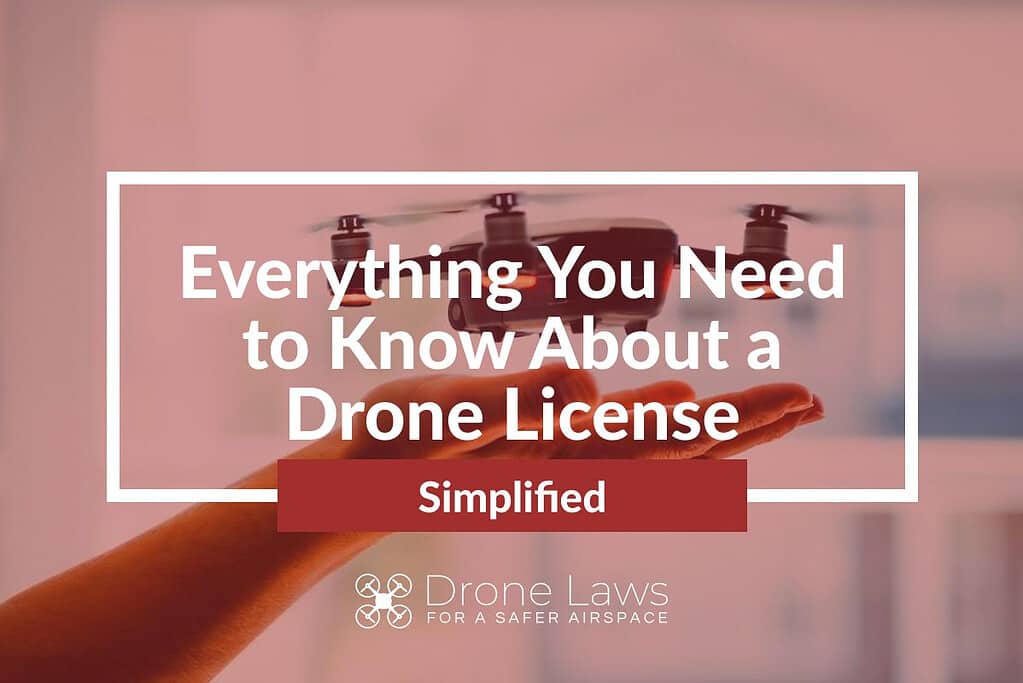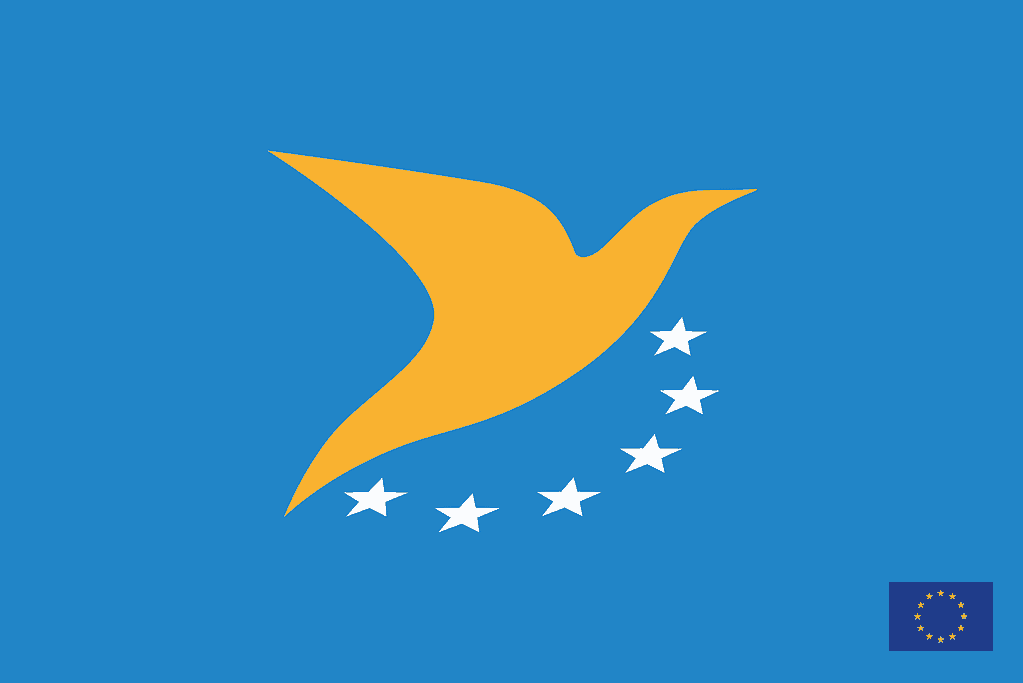You have a new drone. Before you fly, you must know if you need a drone license. And if so, how do you get that drone pilot license? Everything you need to know about a drone license is explained below.
Drone licensing requirements vary by jurisdiction or, more accurately, drone regulator. Typically, a drone pilot license is not required for recreational drone use following strict guidelines but is necessary for commercial or other risky drone use.
What should you know about a drone license in the United States and territories (including all FAA-regulated airspace)?
In the USA, the FAA regulates drone use under Part 107 (the FAA’s Small UAS Rule), with an exemption for recreational drone use (Section 44809 of Title 49 of the U.S. Code). Therefore, you do not need a drone license if your drone use is recreational and falls within the scope of 44809. However, to fly your drone commercially or under the FAA’s Small UAS Rule (Part 107), you must first obtain a Remote Pilot Certificate (RPC), also known as a drone license or a Part 107 certificate.
With this certificate, you can fly a drone for any reason in all U.S. states and territories.
Do you need a drone license? Recreational vs. Commercial Drone Use Explained
We use a “drone license,” but the FAA uses the more accurate “Remote Pilot Certificate.” Although the drone is not licensed, the Pilot or Operator may be required to be licensed. This license should not be confused with a drone registration (which we discuss in detail in our Drone Registration explainer).
Recreational drone use: If you only want to fly your drone for fun, you don’t need a license if you follow the rules in Section 44809 exception. Those rules are:
- You fly the UAV only for recreational purposes.
- You fly the UAV following the standard operating and safety rules (a set of safety rules developed by a community-based group in collaboration with the Federal Aviation Administration for model aircraft and drones).
- As the pilot, you fly your drone within your line of sight or the line of sight of a visual observer who is in the same place and talks directly with you. You or your operator must be able to see your drone (without visual aids such as a binocular).
- You do not interfere with and must give way to any manned aircraft during your drone flight.
- You fly in Class G airspace, fly the drone from the ground to no more than 400 feet above ground level, and follow all airspace limitations and prohibitions.
- As the pilot or drone operator, you receive authorization from the administrator or designee before operating in controlled airspace (Class B, Class C, Class D airspace, or Class E airspace). You must comply with all airspace limitations and prohibitions.
- As a drone pilot or operator, you passed the aeronautical knowledge and safety test (recreational UAS safety test – TRUST) and have proof of passing the test on file for the administrator or law enforcement to look at if they want to.
- You have registered your drone and marked it, and the administrator, a representative of the administrator, or law enforcement can see proof of registration if they want to.
Any recreational flight that does not qualify under the rules above or any commercial drone flight must follow the FAA Part 107 rules, which require a drone license.
Commercial drone use: You must have a drone license if you are using your drone for business, work, or any commercial activity.
We have provided more details on the recreational drone exception here: Section 44809 regulations.
We have also provided more details on the FAA Part 107 rule here: FAA 107
How to Get a Drone License (for a First-Time Pilot)
Eligibility
The Federal Aviation Administration (FAA) has specific commercial drone pilot license requirements for anyone operating in the national airspace system.
- Be at least 16 years old.
- Be able to understand, speak, read, and write English.
- Be mentally and physically fit to fly a drone.
- Pass the required aeronautical knowledge exam: “Unmanned Aircraft General – Small (UAG).”
It’s essential to note that if you have any physical or mental condition that could affect your ability to operate a drone safely, you must report it to the FAA.
Training and Testing
To get your drone license, you must first meet the requirements and then pass a test of your knowledge. The test covers different parts of drone operation, such as FAA rules, airspace, weather, and what to do in an emergency.
The FAA’s Remote Pilot—Small Unmanned Aircraft Systems Study Guide is an excellent way to study for the test. In addition, several online training courses are also available to help you prepare for the test.
The test consists of 60 questions. You will have 2 hours to complete the test. Your minimum passing score is 70%, requiring you to get 42 questions right.
When you’re ready to take the test, you must schedule an appointment with an FAA-approved Knowledge Testing Center. Be sure to bring a government-issued photo I.D. to your test.
The FAA has provided free resources to help you study for the exam. We have listed those resources below.
Application Process
After you pass the knowledge test, you can send an application to the FAA to get your drone license. The application includes your test results, proof of your identity, and a fee.
The FAA has the Integrated Airman Certification and Rating Application (IACRA) system that lets you apply for your drone license online. Before signing up for the knowledge test, you must make an IACRA profile and get an FAA Tracking Number (FTN).
The FAA will review your application and give you a drone license if you meet all the requirements. Your license to fly a drone is valid for two years. After that, you must pass a recurrent knowledge test to get a new one.
The Drone License Application Process: Step by Step
- Make an Integrated Airman Certification and Rating Application (IACRA) profile.
- Get an FAA Tracking Number (FTN) before you sign up for a knowledge test.
- Find your preferred FAA-approved Knowledge Testing Center and schedule a test appointment. Be sure to bring a government-issued photo I.D. to your test.
- Pass the initial required aeronautical knowledge test: “Unmanned Aircraft General—Small (UAG).” Topical areas covered in the Knowledge test include:
- Regulations relating to small unmanned aircraft system (SUAS) ratings, limitations, privileges, and flight operation
- Airspace classification, flight restrictions, and operating requirements affecting SUAS operation
- Aviation weather information sources and effects of weather on UAV performance
- SUAS loading and performance
- Emergency procedures
- Crew resource management
- Radio communication procedures
- Determining the performance of small unmanned aircraft
- Physiological effects of drugs and alcohol
- Aeronautical decision-making and judgment
- Airport operations
- Maintenance and preflight inspection procedures
- Operation at night
- Complete FAA Form 8710-13, the remote pilot certificate (FAA Airman Certificate and/or Rating Application), using the online FAA Integrated Airman Certificate and/or Rating Application system (IACRA).*
- Log in with your username and password.
- Click on “Start New Application” and
- Application Type “Pilot,”
- Certifications “Remote Pilot,”
- Other Path Information,
- Start Application
- Follow the prompts provided by the application.
- When prompted, please enter your 17-digit Knowledge Test Exam ID (note: sometimes it takes up to 48 hours after the test date for the knowledge test to appear in IACRA).
- Sign the application electronically and submit it for processing.
- The FAA sends a confirmation email when you have completed your TSA security background check. This email will tell you how to print a copy of the IACRA temporary remote pilot certificate.
- Once the FAA completes all other internal prerequisites, a permanent remote pilot certificate is mailed.
- Congratulations, you are now a commercial drone pilot.
- Have your Remote Pilot Certificate with you whenever you fly your UAS, and follow the drone regulations.
Requirements for Remote Pilot Certificate:
- Your remote pilot or operator certificate must be readily available during all UAS operations.
- Certificate holders complete an online recurrent training to maintain aeronautical knowledge recency every 24 calendar months.
How to Get a Drone License (for an Existing Part 61 Certificate Holder)
Eligibility
The Federal Aviation Administration (FAA) has specific requirements for a commercial drone license.
- You must have a pilot certificate issued under 14 CFR part 61.
- Must have completed within the previous 24 months, a flight review.
The Drone License Application Process for Existing Part 61 Certificate Holders: Step-by-Step
- Create a new account or log into the existing one on the FAA Safety Team (FAASTeam) website.
- Complete the online free training course Part 107 SUAS Initial (ALC-451). The topic areas in the course include:
- FAA Regulations relating to SUAS rating privileges, flight operation, drone usage, and limitations
- Effects of Weather on SUAS Performance
- Small unmanned aircraft loading and performance
- Emergency procedures
- Crew resource management
- Determining the performance of small unmanned aircraft
- Maintenance and preflight inspection procedures
- Operation at night
- Create a new account or log into your existing account in IACRA.
- Complete the remote pilot certificate (FAA Airman Certificate and/or Rating Application) Form 8710-13 in IACRA
- Log in with your username and password.
- Click on “Start New Application” and
- Application Type “Pilot,”
- Certifications “Remote Pilot,”
- Other Path Information,
- Start Application
- Follow the application prompts.
- Sign the application electronically and submit it for processing.
- Schedule an appointment with any one of the following entities to validate your identity. You must bring your completed Form 8710-13, proof of your current flight review, online course completion certificate, and a valid photo I.D.
- An FAA-certificated flight instructor (CFI),* or
- At any FAA Flight Standards District Office (FSDO), or
- An airman certification representative (ACR), or
- With an FAA-designated pilot examiner (DPE),
- Please note: * CFIs will not issue temporary certificates. The CFI can process applications for you if you do not want a temporary certificate.
- The representative will sign your application and then issue you your temporary airman certificate. Your permanent certificate will be sent to you via U.S. mail within several weeks.
- Have your Remote Pilot Certificate available with you whenever you fly your UAS.
Requirements for the Remote Pilot Certificate:
- It must be easily accessible by the remote pilot during all UAS operations.
- Certificate holders must complete the online recurrent training every 24 calendar months to maintain their aeronautical knowledge recency.
Renewing and Updating Your FAA Drone License
After getting an FAA drone license, it’s essential to keep it up to date and renew it so you can keep flying it legally. Here are some steps to renew and update your drone license:
- Renew your drone registration every three years through the FAA DroneZone website. The drone registration costs $5 and is valid for three years.
- Take the Part 107 Recurrent Exam online to renew your Part 107 license. The exam is free and takes about an hour to complete. You can take the exam on the FAA’s website.
- Visit the FAA website often to learn about the latest drone rules and regulations. Regulations and rules can change, so staying informed and up-to-date is essential.
- Consider taking additional training courses to improve your drone piloting skills and knowledge. Many online courses can help you learn new techniques and stay up-to-date with drone technology.
Anyone who holds the Part 107 remote pilot certificate (regardless of their aeronautical knowledge recency):
- Complete the free Part 107 Small UAS Recurrent (ALC-677) online training course.
Part 107 remote pilots who are also certified with a current flight review per Part 61:
- Complete the free Part 107 Small UAS Recurrent (ALC-515) online training course.
Read the Remote Pilot –SUAS Airman Certification Standards (PDF).
Renewing and updating your drone license is integral to being a responsible drone operator. By staying up-to-date with the latest regulations and rules, you can ensure that you operate your drone safely and legally.
How many hours should you study for the FAA 107 test?
The FAA recommends you spend 20 hours studying to pass the Part 107 exam.
How much does the Part 107 exam cost?
The FAA Part 107 exam costs $175; an FAA-authorized center administers it. The testing fee is non-refundable, so study before taking it. If you fail the FAA 107 exam, you must wait two weeks before retaking it.
What does a FAA drone license cost?
The Part 107 test fee is $175 and goes directly to the testing center. The minimum cost of an FAA drone pilot license is $175. Some might choose to attend a paid drone training class, and those costs can vary depending on the school. Additional costs you might incur to begin commercial drone operations include registering your drone with the FAA, which costs $5 and is valid for three years, and drone insurance.
Where can I take the FAA 107 drone license exam?
The FAA lists authorized testing facilities in most metropolitan centers and all 50 states. To find your nearest testing facility, click on this FAA link, which shows their authorized testing centers. Next, click on the “Find a Test Center” heading, and you will be taken to a page where you can put in your postal code, country, and the exam you are interested in (select the Unmanned Aircraft General—Small (UAG)).
Part 107 Knowledge Test Suggested Study Materials
- Airmen Certification Standards (PDF)
- Knowledge Test Study Guide (PDF)
- Pilot’s Handbook of Aeronautical Knowledge
- Practice exams are available on the PSI Services Knowledge Testing Centers
Where can I find definitive drone information?
The FAA regularly publishes Advisory Circulars online. Each Advisory Circular guides compliance with airworthiness regulations, pilot certification, operational and training standards, and other rules within the 14 CFR Aeronautics and Space Title. We make every effort on these pages to provide simple summaries of these definitive circulars. Still, we always recommend checking the FAA website for more recent and authoritative regulatory information.
USA Drone Licensing Summary
Congratulations! You have reached the end of this article on drone licenses. By now, you should understand what it takes to become a certified drone pilot and the benefits of having a drone license.
Remember, if you are flying drones for any non-recreational purpose, or commercial reason, you must get an FAA Remote Pilot Certificate. This RPC is known as an FAA drone license, a Part 107 license, or a Part 107 certificate. You can use your certificate, which allows you to operate a drone in all U.S. states and territories. Drone operations under Part 107 must follow federal regulations. However, in some jurisdictions, additional limitations might be put in place. Find the specific state using the search function at the bottom of this page. There you will find any local drone regulations which drone operators must follow in addition to the federal regulations.
To get your drone license, you must be at least 16 years old, understand, speak, read, and write English, and be physically and mentally able to fly a UAS safely. You must also pass a Part 107 knowledge test and be vetted by the TSA.
Getting your drone license may seem daunting, but it is worthwhile. With a drone license, you can legally operate a drone for commercial purposes, such as aerial photography, surveying, and inspections. You can also join the fast-growing community of commercial drone pilots using this technology to innovate and create new opportunities.
So, what are you waiting for? Take the first step to joining the drone industry by becoming a professional certified drone pilot today!
What should you know about a drone license in your country?
Drone licensing differs by country worldwide.
The preceding discussion deals with USA drone licensing or remote pilot certification. Please note that the above process applies to every state and territory of the USA where the Federal Aviation Administration regulates airspace.
Use the search function at the bottom of this page to find the drone laws in your desired location (corresponding to the state, city, or country). You will find out if you need a drone licence, along with our outline of the specific drone licensing and registration requirements on each country page. We also provide links to any recommended drone pilot ground school or drone training resources.
NOTE: This page is about the Regulation of Unmanned Aerial Vehicles: Small Unmanned Aerial Systems (SUAS), Small UAS, Remote Piloted Aerial Systems (RPAS), unmanned aerial vehicle (UAV), Unmanned Aerial System (UAS), and drone are interchangeable terms unless specified. Model Aircraft, toy, remote-controlled, and RC aircraft may be covered by the same regulations unless specified.
Find out why
We think you must use a Drone Preflight Checklist
And a Drone Post-flight checklist
Free Drone Flight Checklist PDF
This Drone Flight Checklist is better than others.
It’s free!
It includes both the preflight checklist and post-flight checklist
It’s an easy-to-use printable PDF that covers all your bases.
Traveling with a Drone?
Click here to read our Comprehensive Guide For Traveling With A Drone.
LET US CONNECT YOU
Calling All Drone Service Companies, Trainers, Tour Guides with Drone Experience
Contact Us with your website, email address and phone number using our Contact Page
We want to share your information with visitors who look for credible providers that follow the rules.
NOW IT’S YOUR TURN




Leave a Comment